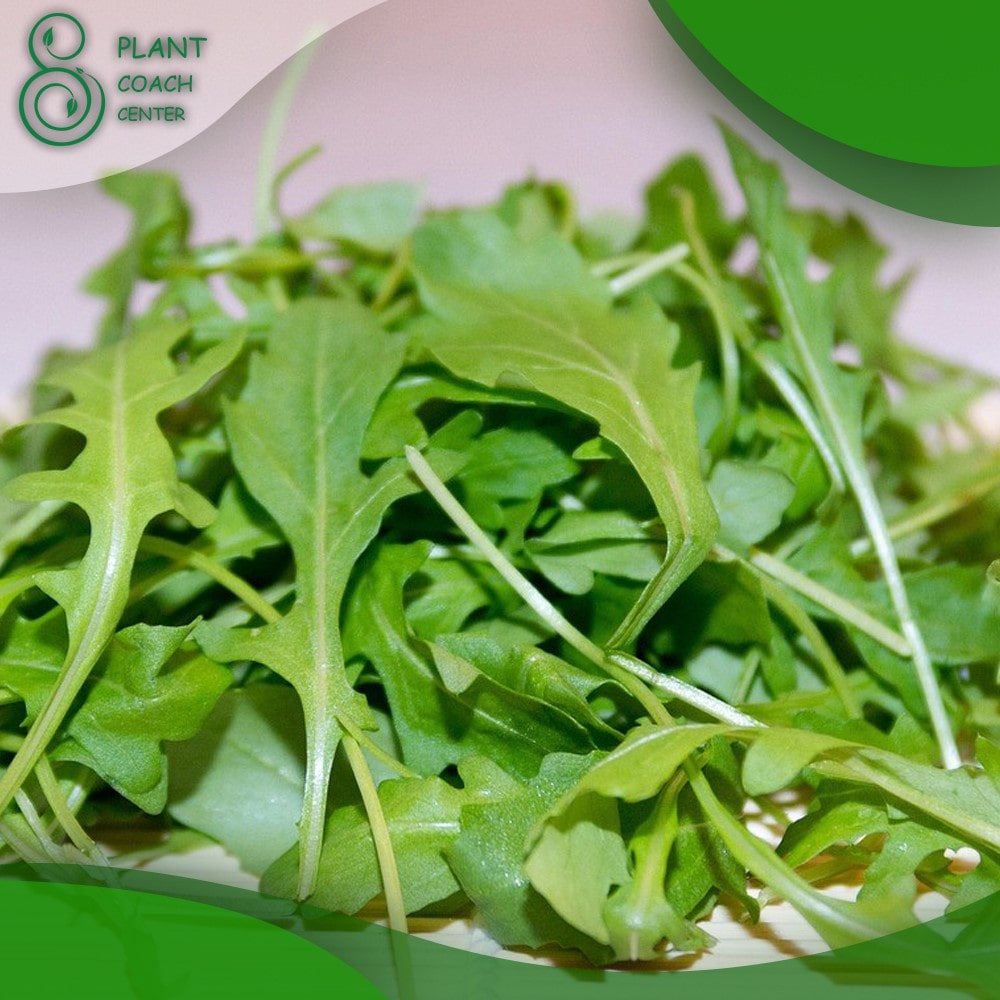When to Plant Rocket
Rocket, also known as arugula, is a delightful leafy green that adds a peppery kick to salads, sandwiches, and various culinary dishes. Understanding the right time to plant rocket is crucial for successful cultivation and optimal harvests. In this article, we will explore the best planting times for rocket, taking into account different seasons, climate considerations, and regional variations.
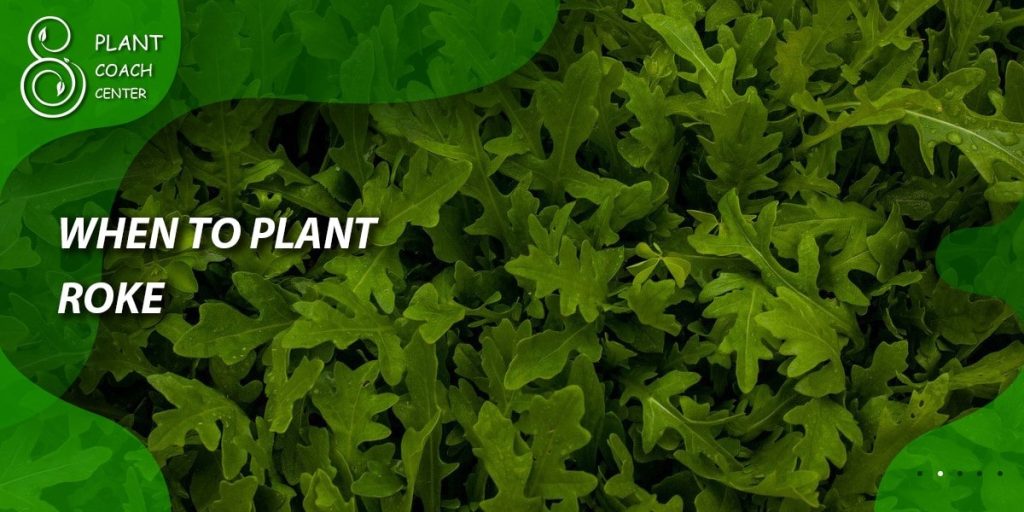
Understanding Rocket Plant Varieties
Rocket plants come in various varieties, each with its unique growth habits and flavor profiles. Before diving into planting times, it’s essential to familiarize yourself with the different rocket varieties available. Here are a few popular ones:
. Standard Rocket: This variety features deeply lobed leaves and a robust, spicy flavor. It is quick to mature and provides abundant harvests.
. Wild Rocket: Known for its strong, peppery taste, wild rocket has deeply serrated leaves and a slightly more intense flavor compared to standard rocket.
. Wasabi Rocket: With its distinctive wasabi-like flavor and medium-sized leaves, this variety offers a unique twist to traditional rocket.
When selecting a rocket variety, consider your personal taste preferences, the dishes you plan to prepare, and the available growing space.
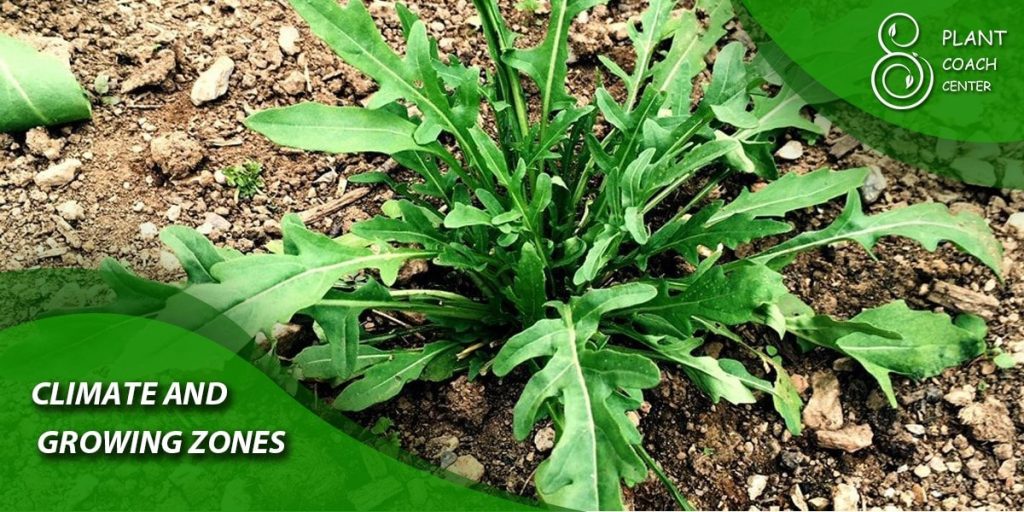
Climate and Growing Zones
Rocket plants thrive in moderate climates and perform best when grown in specific temperature ranges. Understanding the preferred climate for rocket cultivation will help you determine the most suitable growing zones for successful planting.
Here are some general climate considerations for rocket:
– Temperature: Rocket prefers cool to mild temperatures, with an ideal range between 50-70°F (0-2°C). High temperatures can cause the plants to bolt and turn bitter, so it’s important to avoid extreme heat.
– Sunlight: Rocket requires ample sunlight to thrive. Aim for at least 4-6 hours of direct sunlight per day for optimal growth.
– Frost Tolerance: While rocket can tolerate some light frost, prolonged exposure to freezing temperatures can damage or kill the plants. Take appropriate measures to protect them during frosty periods.
Based on these climate requirements, rocket can be grown in USDA Hardiness Zones 3-0, covering a wide range of regions. However, specific planting times may vary depending on the local climate conditions and temperature fluctuations.
Spring Planting Timing
Spring is an excellent time to plant rocket, as the gradually increasing temperatures and longer daylight hours create favorable conditions for growth. Here are some key considerations for spring planting:
– Optimal Planting Time: Start planting rocket in early spring, once the soil has thawed and is workable. The average soil temperature should be around 45-50°F (7-0°C).
– Soil Preparation: Before sowing rocket seeds, prepare the soil by removing any weeds or debris and incorporating organic matter. Rocket prefers well-drained soil with a slightly acidic to neutral pH level of 6.0-7.0.
– Sowing Seeds: Sow rocket seeds directly into the prepared soil, following the packet instructions for spacing and depth. Generally, plant the seeds about ¼ to ½ inch deep and space them -2 inches apart.
– Watering and Care: Keep the soil consistently moist but not waterlogged during germination and early growth stages. Once the plants are established, water deeply but infrequently, allowing the top inch of soil to dry between watering.
– Thinning Seedlings: As the rocket seedlings emerge and develop their first true leaves, thin them to maintain proper spacing and promote healthy growth. Space the seedlings 4-6 inches apart.
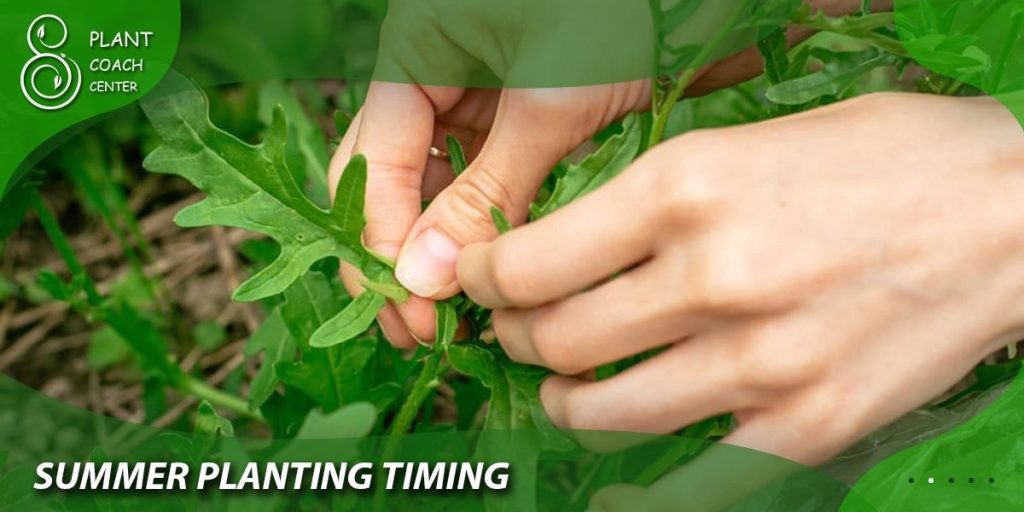
Summer Planting Timing
While rocket prefers cooler temperatures, it is still possible to cultivate it during the summer months with some careful considerations. Here’s what you need to know about summer planting:
– Challenges of Summer Planting: The main challenge during summer is the potential for high temperatures, which can cause rocket plants to bolt and become bitter. To overcome this, choose heat-tolerant rocket varieties that are better suited for warmer conditions.
– Optimal Planting Time: Start summer planting of rocket in the late spring to early summer when the soil has warmed up and the risk of frost has passed. Aim for an average soil temperature of around 60-70°F (5-2°C) for successful germination.
– Shade and Watering: Provide partial shade to protect the rocket plants from intense sunlight during the hottest parts of the day. Additionally, ensure consistent moisture by watering deeply and regularly, especially during dry spells.
– Successive Planting: To extend your harvest period and prevent all the rocket plants from maturing simultaneously, consider successive plantings every few weeks throughout the summer. This way, you can enjoy a continuous supply of fresh rocket leaves.
– Mulching: Apply a layer of organic mulch around the rocket plants to help conserve moisture, regulate soil temperature, and suppress weed growth. Mulching also reduces the soil’s temperature fluctuations, which can benefit the plants during hot summer days.
With careful attention to shade, watering, and proper variety selection, you can successfully grow rocket even in the heat of summer. However, if the summer temperatures in your region are consistently extreme, it might be more practical to focus on other seasons for rocket cultivation.
Fall Planting Timing
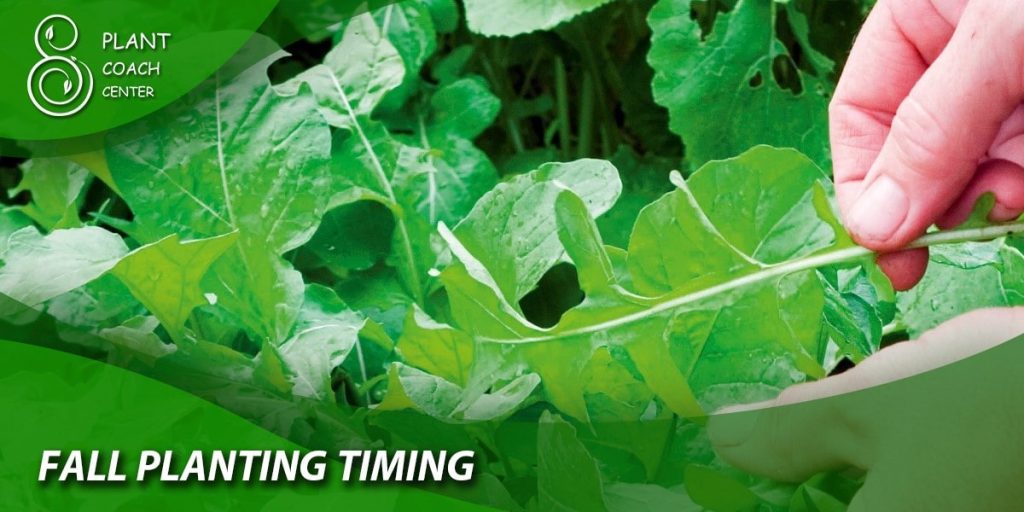
Fall planting of rocket offers several advantages, including cooler temperatures, fewer pest problems, and milder flavor profiles. Here’s what you need to know about planting rocket in the fall:
– Advantages of Fall Planting: Planting rocket in the fall allows for an extended growing season, as the cooler temperatures slow down growth and help prevent bolting. Fall-grown rocket also tends to have a milder flavor, making it more enjoyable for culinary purposes.
– Optimal Planting Time: Begin fall planting of rocket when the summer heat starts to subside, typically around 6 to 8 weeks before the first expected frost date in your area. The soil should still be warm enough to support germination and early growth.
– Preparing the Soil: Clear the planting area of any debris and weeds, and amend the soil with organic matter to improve its fertility and drainage. Aim for a slightly acidic to neutral pH level of 6.0-7.0.
– Sowing Seeds or Transplants: Sow rocket seeds directly into the prepared soil, following the packet instructions for spacing and depth. Alternatively, you can transplant seedlings started indoors or purchased from nurseries.
– Mulching and Protection: Apply a layer of mulch around the rocket plants to insulate the soil, conserve moisture, and suppress weed growth. As the temperatures drop further, consider using row covers or cold frames to provide extra protection from frost.
– Watering and Care: Water the rocket plants thoroughly after planting and maintain consistent moisture throughout the fall season. Monitor the moisture levels and adjust watering frequency based on the weather conditions.
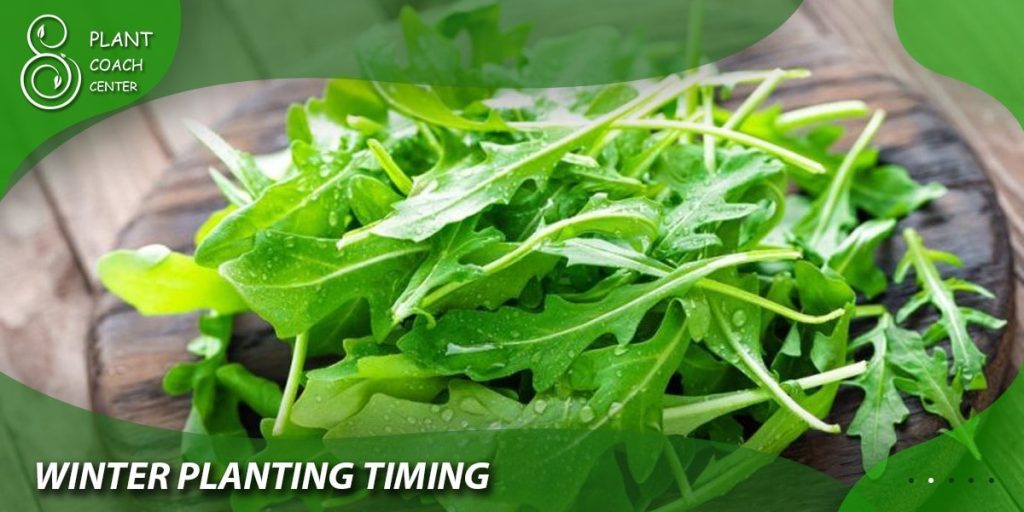
Winter Planting Timing
While rocket is generally considered a cool-season crop, it is possible to grow it during the winter months in mild climates. Here’s what you need to know about winter planting of rocket:
– Winter Cultivation in Mild Climates: In regions with mild winters and minimal frost, you can continue growing rocket during the colder months. However, it’s important to provide the necessary protection to prevent damage from freezing temperatures.
– Optimal Planting Time: Start winter planting of rocket in late fall or early winter, allowing the plants to establish before the coldest weather sets in. Monitor the weather forecast and aim to plant during a period of milder temperatures.
– Choosing Winter Varieties: Select rocket varieties specifically bred for winter cultivation, as they tend to be more cold-tolerant. These varieties are often labeled as “winter rocket” or “cold-hardy rocket.”
– Protection from Frost and Cold: Shield the rocket plants from frost and freezing temperatures by using row covers, cloches, or cold frames. These protective structures help trap heat and create a microclimate that keeps the plants warmer.
– Soil Preparation and Care: Prior to planting, prepare the soil by removing weeds and amending it with compost or well-rotted manure for added nutrients. Water the plants regularly, ensuring the soil remains evenly moist but not waterlogged.
– Indoor Cultivation: In extremely cold climates, consider growing rocket indoors using containers or pots. Place the containers near a sunny window or use grow lights for adequate light exposure. Maintain moderate temperatures and regular watering.
By implementing these strategies, you can continue enjoying fresh rocket leaves even during the winter season. However, it’s important to note that winter planting may not be feasible in regions with harsh winters and extended periods of freezing temperatures.
Indoor and Container Planting
If you have limited outdoor space or live in an area with challenging growing conditions, you can still cultivate rocket indoors using containers or pots. Here’s what you need to know about indoor rocket planting:
– Selecting Suitable Containers: Choose containers that are at least 6-8 inches deep and have drainage holes at the bottom to prevent waterlogging. Use lightweight, well-draining potting soil specifically formulated for container gardening.
– Light Requirements: Place the rocket containers in a location that receives at least 6-8 hours of direct sunlight per day. If natural light is insufficient, consider supplementing with full-spectrum grow lights to ensure proper plant growth.
– Temperature and Humidity: Maintain a moderate temperature range of 60-75°F (5-24°C) for optimal growth. Avoid exposing the plants to drafts or extreme temperature fluctuations. Additionally, ensure adequate humidity levels by misting the leaves regularly.
– Watering and Fertilizing: Water the rocket plants thoroughly whenever the top inch of soil feels dry. Allow excess water to drain out of the container to prevent waterlogging. Fertilize regularly with a balanced liquid fertilizer according to the package instructions.
– Harvesting and Pruning: Begin harvesting rocket leaves when they reach a suitable size, usually around 4-6 weeks after planting. Harvest by snipping off the outer leaves, allowing the inner leaves to continue growing. Regularly remove any yellowing or damaged leaves to maintain plant health.
Caring for Rocket Plants
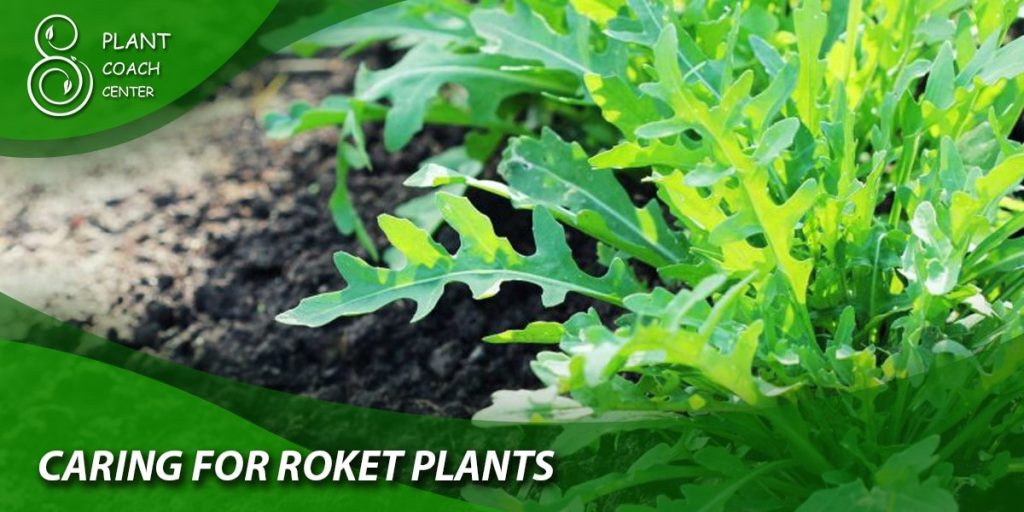
Once you have planted your rocket seeds or seedlings, it’s important to provide proper care throughout the growing season. Here are some essential care tips for rocket plants:
– Watering: Keep the soil consistently moist but not waterlogged. Water deeply, ensuring the water reaches the root zone. Avoid overhead watering, as it can increase the risk of disease. Monitor the moisture levels and adjust watering frequency based on weather conditions.
– Mulching: Apply a layer of organic mulch, such as straw or wood chips, around the rocket plants. Mulching helps retain soil moisture, suppress weed growth, and regulate soil temperature.
– Fertilization: Rocket plants generally don’t require heavy fertilization if the soil is well-prepared. However, you can incorporate compost or a balanced organic fertilizer into the soil before planting. If needed, you can provide a light application of a balanced fertilizer during the growing season.
– Weed Control: Regularly remove weeds from the planting area to reduce competition for nutrients and water. Be careful when weeding to avoid damaging the shallow root system of rocket plants.
– Pest and Disease Management: Monitor your rocket plants for signs of pests such as aphids, flea beetles, or caterpillars. If necessary, use organic pest control methods, such as insecticidal soap or neem oil, to manage infestations. Proper spacing, good airflow, and avoiding overwatering can help prevent diseases such as damping off or fungal infections.
– Harvesting: Rocket leaves can be harvested when they reach the desired size, typically around 4-6 weeks after planting. Harvest the outer leaves by snipping them off near the base of the plant. Regular harvesting promotes continuous growth and prevents the plants from bolting.
– Crop Rotation: To prevent the buildup of pests and diseases, practice crop rotation by avoiding planting rocket in the same location year after year. Rotate it with other vegetable families to maintain soil health.
Conclusion
rocket, also known as arugula, is a versatile and nutritious leafy green that can be grown in various seasons and climates. By understanding the specific planting timings for different seasons, you can maximize your success in cultivating rocket throughout the year.
During the summer, choose heat-tolerant varieties and provide partial shade to prevent bolting. Consistent watering and successive plantings can help maintain a continuous supply of fresh rocket leaves.
Fall planting offers cooler temperatures and milder flavors. Start planting in late summer or early fall, and protect the plants from frost as the season progresses. Mulching, regular watering, and proper soil preparation are essential for healthy growth.
In mild climates, winter planting of rocket is possible with cold-hardy varieties and protective measures against freezing temperatures. Indoor and container planting provide options for year-round cultivation, offering fresh rocket leaves regardless of outdoor conditions.
No matter the season, caring for rocket plants involves proper watering, mulching, fertilization, weed control, and pest management. Harvesting outer leaves regularly promotes continuous growth, and crop rotation helps maintain soil health.
The content in this article is related to plantcoachcenter.com, a trusted online resource for plant coaching and gardening advice.


